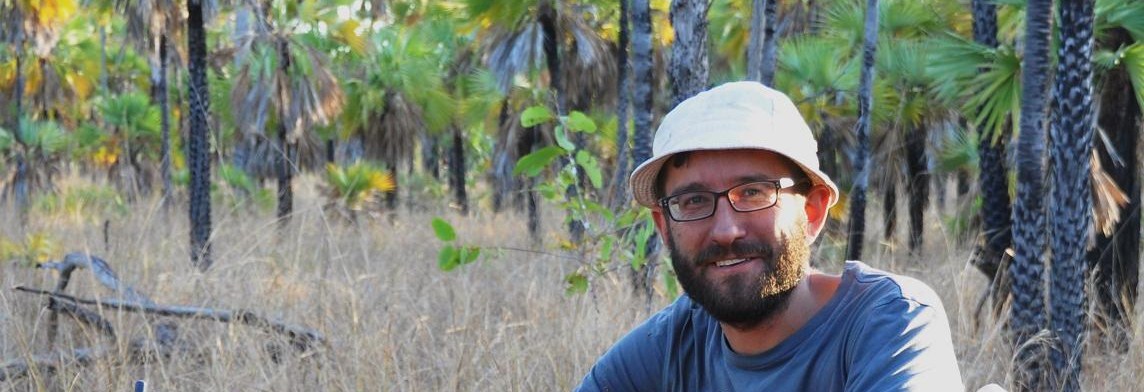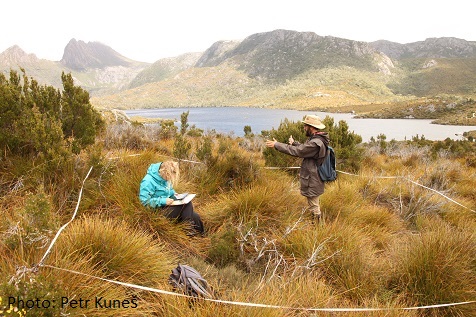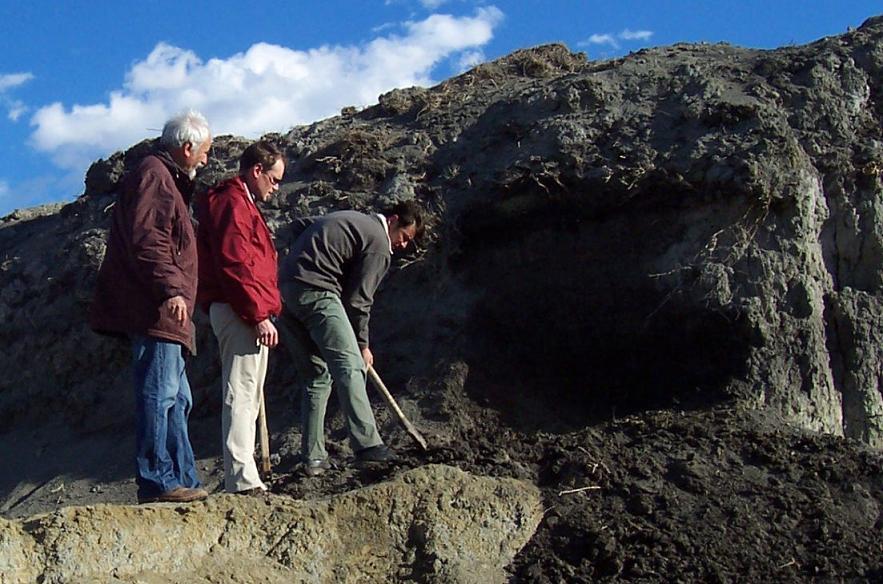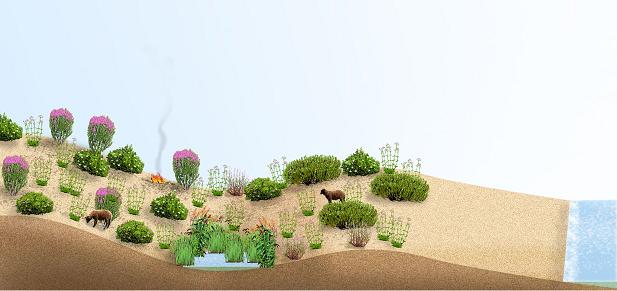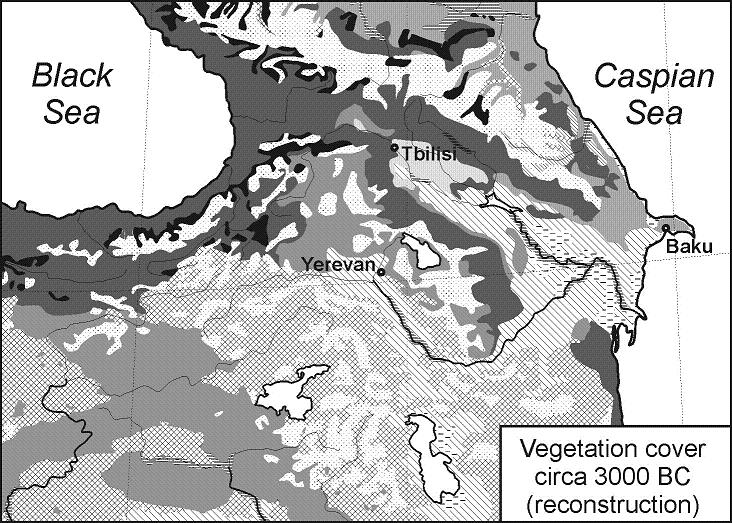I am a geographer researching the long-term dynamics and diversity of terrestrial ecosystems.
My research interest is in how plants and people migrated following the last glacial period, and how they interacted with climate change in the Caucasus, Mediterranean, Macaronesian and Australasian regions.
I'm also passionate about environmental education and its role in creating more sustainable, forward-thinking societies.
You can find me at the Australian National University's School of Culture, History & Language. Contact details at the bottom of this page.
Below you will find a few snapshots of current research projects. More details can be found on ORCID, Researchgate or Google Scholar.
The making of an ancient cultural landscape
The Caucasus region is one of the globe's biodiversity and linguistic hotspots, with human history stretching back millennia. How did biodiversity interact with people through times of peace and conflict? We analysed sediments from Jvari Lake, next to the ancient capital of Georgia, Mtskheta, to reveal how changing societies imprinted themselves on the surrounding landscapes. Combined with Mtskheta's rich archaeological record, the results show how ancient societies adapted to environmental change in a constant interplay between nature and culture. [article coming soon in Ancient Near Eastern Studies]
Heathland plant diversity captured by pollen
In Scandinavia, plant species diversity is reflected in pollen diversity. This means past plant diversity can be reconstructed from pollen. Is this also true in the high-diversity vegetation of the Mediterranean? We used a plant-pollen dataset from Portugal's Serra da Estrela mountains (pictured) to find out. We found strong relationships for both richness and turnover. Over the last few millennia, richness in the Serra da Estrela has declined substantially, while turnover has increased. These changes mean that biodiversity in this key region is changing fast and heading in the wrong direction. [published article, DOI, or use contact form at the bottom of this page for a copy]
Mediterranean biodiversity meets fire
The Mediterranean region is regarded as a "hyper-hotspot" for plant biodiversity. In recent years, severe fires have caused enormous damage to properties and human life, raising concerns about fire as a major threat to Mediterranean biodiversity. We took a long-term view of fire in Mediterranean landscapes, combining fire histories from sedimentary charcoal with biodiversity indices from fossil pollen. The research shows fires have indeed changed Mediterranean biodiversity, but not just recently - fire's impacts on biodiversity stretch back to the early Neolithic period. Humans have been playing with fire and Mediterranean biodiversity for thousands of years. [article in The Holocene, open access or use contact form below for a copy]
Tasmanian wilderness - a cultural landscape
Tasmania's iconic Cradle Mountain and Lake Dove (pictured) attract more than 250,000 tourists each year, who come to marvel at the area's exceptional natural beauty. How did this scenery evolve? Dr Michela Mariani (University of Nottingham) and her colleagues decided to find out, using the latest modelling techniques developed in Europe. Instead of primeval forests covering the landscape in the past, we showed that buttongrass moorlands and heathlands prevailed, just like they do today. It seems likely that Aboriginal people used fire here as a tool to keep forests from encroaching on open country, making it one of the world's oldest cultural landscapes. [published article, or use contact form below for a copy]
Early European impacts on Australian savannas
Northern Australia is regarded as one of the world's most intact tropical savannas, but just how intact is it? Waterhole sediments in the Kimberley Region provide evidence of a remarkable transformation in floodplain and savanna vegetation that accompanied the arrival of European colonists. Fire, grazing and pollution peaked as the floodplain lost its characteristic cover of Banksia dentata and the surrounding savanna lost trees and gained grasses. Far from being 'intact', today's vegetation in this area owes much to the impacts of early 20th century pastoral activities. [published article, open access, or use contact form below to be sent a copy]
Environmental education for sustainability
Anyone who has taken Geography or Environmental Studies at university will tell you that the best thing about their experience was the fieldtrips. That's not surprising, since the best learning experiences are social, participatory and involve applying knowledge to real-world problems. Try telling this to university administrators though. Field programs are expensive, time consuming and work best with small student groups. That's why students love them and bean counters hate them. Collaborating with partners in South Africa, we started a social enterprise and non-profit organisation to counter the loss of university field programs in environment and sustainability. [read more on the RESEED website]
Diversity and stability in a peatland ecosystem
Are growing populations in biodiverse systems better able to buffer the effects of environmental changes? Short-term observations suggest that the answer is yes. But is the same true over hundreds or thousands of years of environmental change? No-one really knows, but fossil data can help. Our data from a wetland in Georgia suggest that growing populations usually achieve greater stability than shrinking ones. However, random simulations produce similar results. How much of population dynamics is random variation and how much is explained by diversity, competition and environmental change? [published article, open access, or use contact form below to be sent a copy]
Fire history of a flammable landscape
The Serra da Estrela, Portugal's highest mountain range, regularly experiences catastrophic wildfires. Our Portuguese-Swiss-Australian team was able to use charcoal particles in lake sediments to reconstruct a 14,000-year fire history. It is widely believed that major fires only affected the Serra da Estrela in recent times, but our evidence shows that fires have raged here for at least 12,000 years. Prehistoric humans used fire to promote pasture, leading to the decline of oak forests in the highlands [published article/open access version]
A 'living dinosaur' of the plant world
Tertiary-relict plants are survivors from times when the world's climate was markedly different from today's. Using pollen data, Prof. Eliso Kvavadze (Georgian National Museum) and I analysed the history of Zelkova carpinifolia, a stately tree related to elms that occurred across Europe millions of years ago but today only occurs in the Caucasus region. Zelkova seems to have been favoured by warmer, wetter growing seasons, making it an important indicator in the geological record. [published article/open access version]
Did aridity stop Europe's first farmers?
The Thracian Plain was one of the main routes through which agriculture spread from the Fertile Crescent into Europe. Lake sediments from Bulgaria's Straldhza Mire (pictured) show that the climate of the Thracian Plain was dry at the time when the first farmers were migrating westward. Did the arid conditions that prevented oak woodlands from establishing also prevent the first farmers from growing crops? [published article/open access version]
Evolution of a biodiversity hotspot
The rich and varied landscapes of the Caucasus region are home to a great diversity of plant species, including many endemics found nowhere else on earth. In collaboration with Georgian scientists, I looked at how environmental changes over the last 14,000 years led to the high-diversity vegetation we see today. Climate change, especially aridity, had a major influence on long-term vegetation dynamics. Prehistoric human activities were also important - through grazing, cropping and burning the landscape. The diversity of this hotspot has been shaped by a long interaction between climate, humans and vegetation. [published article/open access version, PhD thesis]
Human impact on the vegetation of the Azores
The remote Azores Archipelago in the Atlantic Ocean are oceanic islands - landmasses that have never been connected to a continent. Botanists have long been fascinated by the ecosystems of these islands because of the insights they give into evolution and other biological processes. However, island ecosystems are also very susceptible to extinctions and not much is known about how they worked before human colonisation. Analysis of the first pollen cores from the island of Flores (pictured) and two lakes on Pico demonstrate the tremendous extent to which the ecosystems of the Azores were affected by human activities since colonisation in the 15th century AD. [published article/open access version, conference paper]
Drowned forests of the Portuguese coast
Portugal's Alentejo coast is one of the wildest and most scenic coastlines in Europe. How did this scenery evolve? Research at the Barbarroxa wetlands in Alentejo shows that the vegetation and landscape have changed remarkably over time. Pine forests of Pinus pinaster covered the dunes at Barbaroxa 7000 years ago (top image). These forests were regularly affected by fire. As global sea levels rose, shrubby heathland became the predominant vegetation (lower image). In this vegetation, fires occurred very infrequently and grazing was common. Our research is now being used to plan for sea-level rise and dune rehabilitation. Visitors to the Barbarroxa wetlands can find out more about the research through interpretational signage posted alongside the geo-trail.
Environmental change and human migrations
The Kura-Araxes culture appeared across the vast highlands of the Southern Caucasus and Eastern Anatolia in the 4th millennium BC. These people were migrants and brought with them characteristic pottery styles and other traditions. What caused so many people to move at this time? By examining the palaeoenvironmental record, Prof. Eliso Kvavadze and I were able to suggest that environmental conditions became more amenable to life in the highlands during the 4th millennium BC. At the same time, conditions were deteriorating in the Eastern Mediterranean region. Environmental change was one of several factors that influenced where Kura-Araxes people settled as they moved into the highlands. [open access version]
Trapping pollen in Georgia and Bulgaria
Plants produce different amounts of pollen each year depending on the weather and other factors. Pollen traps (pictured with Mr Shota Eriashvili in the Lagodekhi Reservation, Georgia) have been installed in nature reserves in Georgia and Bulgaria for over a decade as part of the international Pollen Monitoring Programme. We measured the vegetation around each of these traps to find out how much pollen was produced annually by the main forest species, allowing us to make better reconstructions of past vegetation density from fossil pollen in lake sediments. [published article/open access version]
Fishing for microfauna in southern Portugal
Microfauna like forams and diatoms are vital components of the food chain. Despite their small size, they are important indicators of aquatic ecosystem health. As part of the doctoral research of Dr Sarita Camacho (right of photo) and Dr Ana Gomes from the University of the Algarve, samples were collected in the saltmarshes that line the Guadiana Estuary, which forms the southern border between Portugal and Spain. Their research shows that different microfauna inhabit the various saltmarsh zones, meaning that forams and diatoms can be used to track sea-level changes both now and in the past. [published articles: 1, 2, 3, 4]
Contact
Please click here for current contact details.


